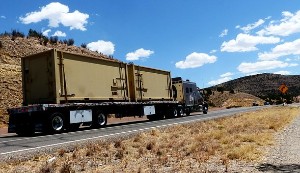Regulations are always in place for a reason. They achieve order by mandating that people follow the rules. This is how we keep people safe and systems functioning properly. With this in mind, the Hours of Service (HOS) rules are intended to motivate trucking businesses (through threat of fines) to ensure their drivers engage in the base level of rest over specific time periods. These rules are clearly important because within the five standard modes of transportation (air, rail, water, pipeline, and truck), trucking has the most intimate and often intermingling with people outside the industry.
In essence, this means trucks are constantly using government created roadways, bridges, as well as tunnels. Furthermore, they share these government-built roadways etcetera with the public who are riding in cars, buses, trucks, and on and on… Consequently, a tired truck driver, not obedient to HOS rules, could not only injure himself but lots of people out on the road. It should be noted that truck drivers can be afflicted with two types of tiredness: physical and mental.
The first set of HOS rules were established in 1938, however, they have changed over the years. The current rules were tweaked to what they are back in 2005. Currently, there’s a suggested adjustment to the rules and from August 22 to October 7 public comment is welcome. The new rules propose more flexibility to the 14-hour maximum time of duty and also how breaks are viewed.
What escaped a lot of people’s attention is that Alaska was rewarded with a unique exemption from the HOS regulations. The reason for the special treatment isn’t because Alaska drivers get any less tired than any others.
Alaska is Unique to the Lower 48
Of course not. It is because Alaska is very different from all the other states in the country. Alaska is the country’s biggest state. It’s spatial are even exceeds Texas, California, and Montana. Because of this FMCSA realized the logistical disparities between it and all the other states. Subsequently, it loosened the HOS regulations for truck drivers in the state. Commercial truck drivers in the rest of the country get a 14-hour duty-time window. Alaskan Truckers, however, are allowed 20 hours. Additionally, where commercial trucks in the lower 48 are granted an 11-hour driving time window, Alaskans get 15 full hours.
So what does this is all mean? It means that truckers in Alaska are allotted more time to finish all of their duties. This is needed when you evaluate the fact that 75% percent of Alaska’s consumer items come through the Port of Alaska in Anchorage. On top of this, most of the ‘last mile’ deliveries to the areas from the Kenai Peninsula to Fairbanks must be done by truck. This becomes even more vital during the difficult winter months.
All in all this regulation shift points to a job well done by administrators who see a valid reason for rule tweaks. In this case, Alaska’s unique environment deserves this unique consideration.
What do you all think?




